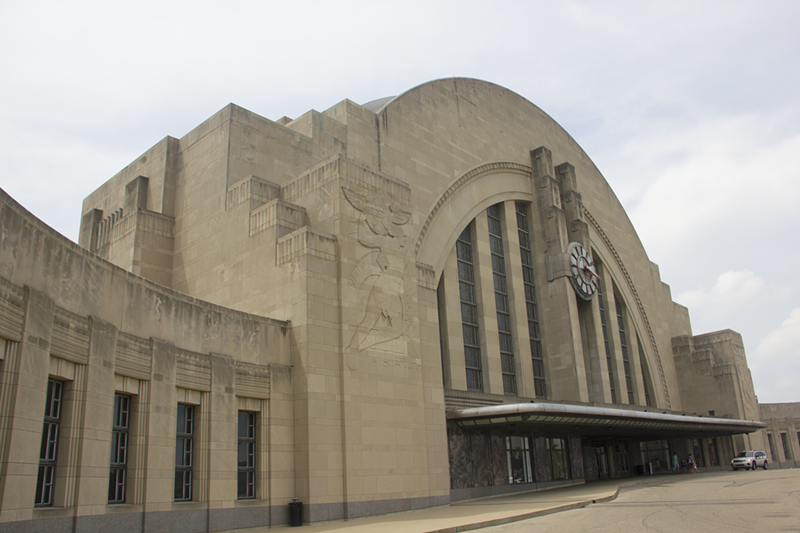Good morning Cincy! It’s finally getting to be bike commuting weather again, and I couldn’t be happier about it. I’ve missed showing up to work all sweaty and out of breath with terrible helmet hair, and I’m sure my coworkers have missed it as well. Anyway, enough about my transportation habits, which I seem to talk about a lot in the morning news blog. Let’s get on to the news.
Sweet. More streetcar politics ahead. Moving utility lines to make way for a streetcar extension will be twice as costly as it was for the track currently being laid between Over-the-Rhine and downtown, according to an estimate performed last year by Duke Energy. Duke says the task, which is necessary before tracks are put down, could cost up to $38 million. Boosters want to get started on the next step for the streetcar, which would extend it near the University of Cincinnati and several of the city’s hospitals uptown. Councilman Chris Seelbach last week introduced an ordinance asking the city to begin looking at plans for the extension. But Mayor John Cranley, an ardent opponent of the project, has dismissed calls for the next step of streetcar as “silly.” Those pushing the city to begin planning for the uptown leg of the streetcar say if plans aren’t in place, the city could lose out on millions in federal funds that could help pay for next steps.
• More than 20 residents at the King Towers apartments in Madisonville are wondering where they’ll be staying following the tragic fire that swept through the building last week. That fire claimed the life of Cincinnati Firefighter Daryl Gordon. Representatives for The Community Builders, the building’s owners, on Sunday told residents they needed to be out of their temporary hotel rooms by 11 a.m. Monday morning. That caused an outcry from the residents and others, including members of Madisonville Community Council. Boston-based The Community Builders has since extended residents’ hotel stays until Wednesday and has promised to help find a solution for temporary housing for the residents while the building undergoes clean up and investigation, a process that could take months.
• Ready to start paying for Union Terminal? The county’s sales tax boost kicks in Wednesday after voters approved it in November. You’ll pay an extra .25 cents on the dollar so the county can pay for much-needed renovations to one of Cincinnati’s most iconic landmarks. The rate is going from 6.75 percent to 7 percent.
• A Greater Cincinnati area school district is boosting anti-drug messages to its students in anticipation of a potential marijuana farm nearby. Monroe Schools says a marijuana farm that would be established should legalization group ResponsibleOhio get its way is unwelcome in the city and that it sends messages to students that cancel out years of anti-drug efforts. One of the group’s 10 proposed grow sites would be in Middletown, less than two miles from Monroe’s K-12 public school. In response, the school district, some community leaders and law enforcement officials have teamed up to redouble anti-drug messages to teens, because telling a teenager not to do something is obviously the best way to make it seem uncool and unappealing. Meanwhile, ResponsibleOhio has responded by pointing out their legalization effort is only for those 21 and over. They also claim that the drug is already readily available to many on the black market and that their proposal would limit or eliminate that market.
• Ohio prison officials want to get inmates job interviews. Ohio Prison Director Gary Mohr has discussed efforts to recruit businesses who are willing to employ former inmates and has proposed setting up some inmates with job interviews upon their release. The program aims to cut recidivism among inmates and keep the number of repeat offenders in Ohio’s prisons to a minimum. Studies suggest those who find jobs after being released from prison have a much lower rate of additional criminal activity.
• In national news, here’s an alarming number: Law enforcement agencies make no arrests in one-third of all murders in the United States. That’s up from just 10 percent of homicides in 1965. Though violent crime has gone down across the U.S. in recent years, so have the percentage of cases in which police even find a suspect. The number of murders solved by law enforcement is even lower, since the FBI’s “clearance rate” only measures arrests, not convictions. The bureau estimates some 200,000 murders have gone unsolved since the 1960s. Law enforcement officials often blame a so-called “no snitch” attitude found in many low-income communities, where they say a number of community members refuse to cooperate with the police and help them find suspects. But some experts point out that murders of law enforcement officers, which often take place in those same neighborhoods, have a very high clearance rate, suggesting a difference in priority for different kinds of murder cases.
That’s it for me. Tweet me. Email me. Comment. Have you gotten your bike out yet? What’s the best spring bike ride location in Cincy? Let me know.


